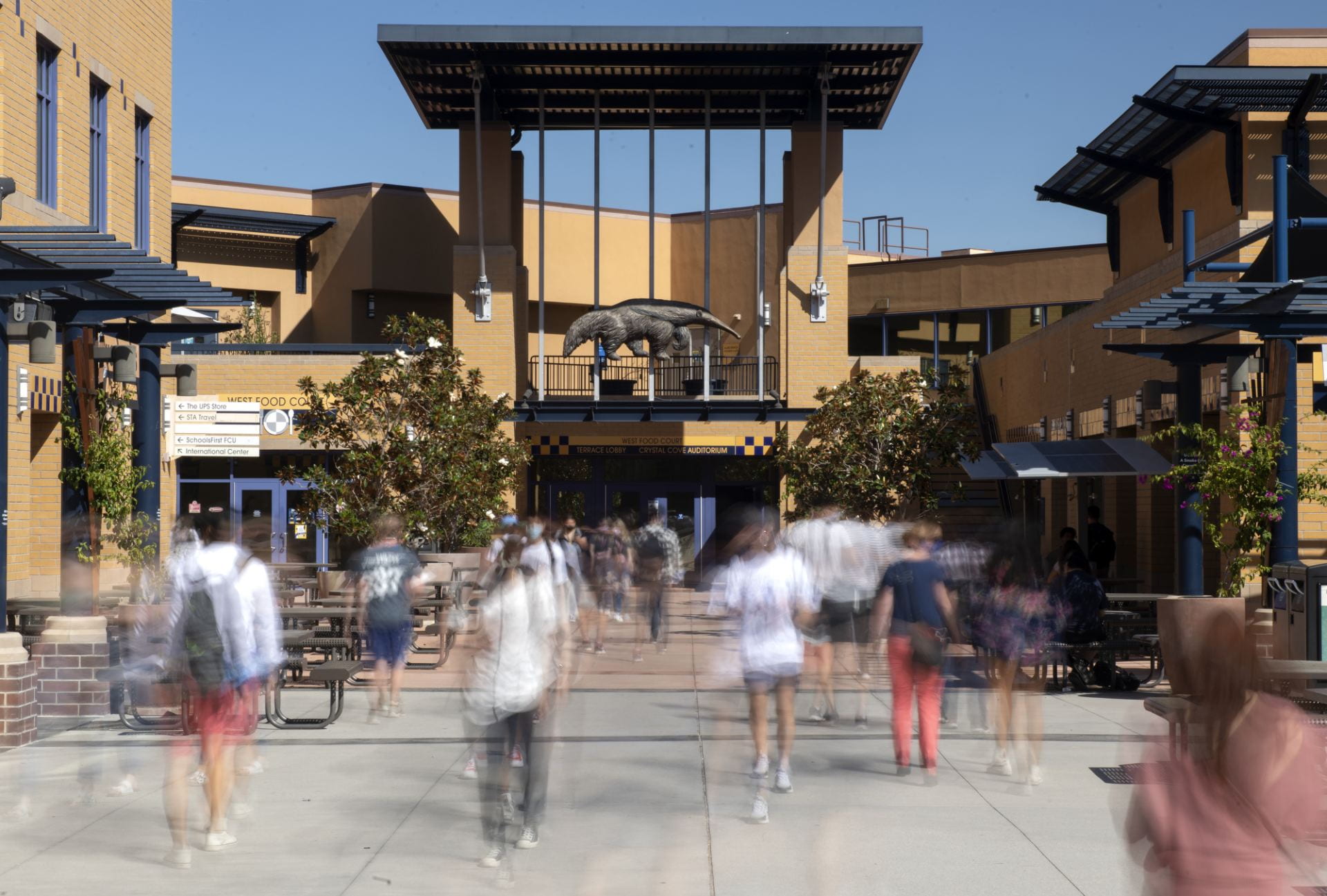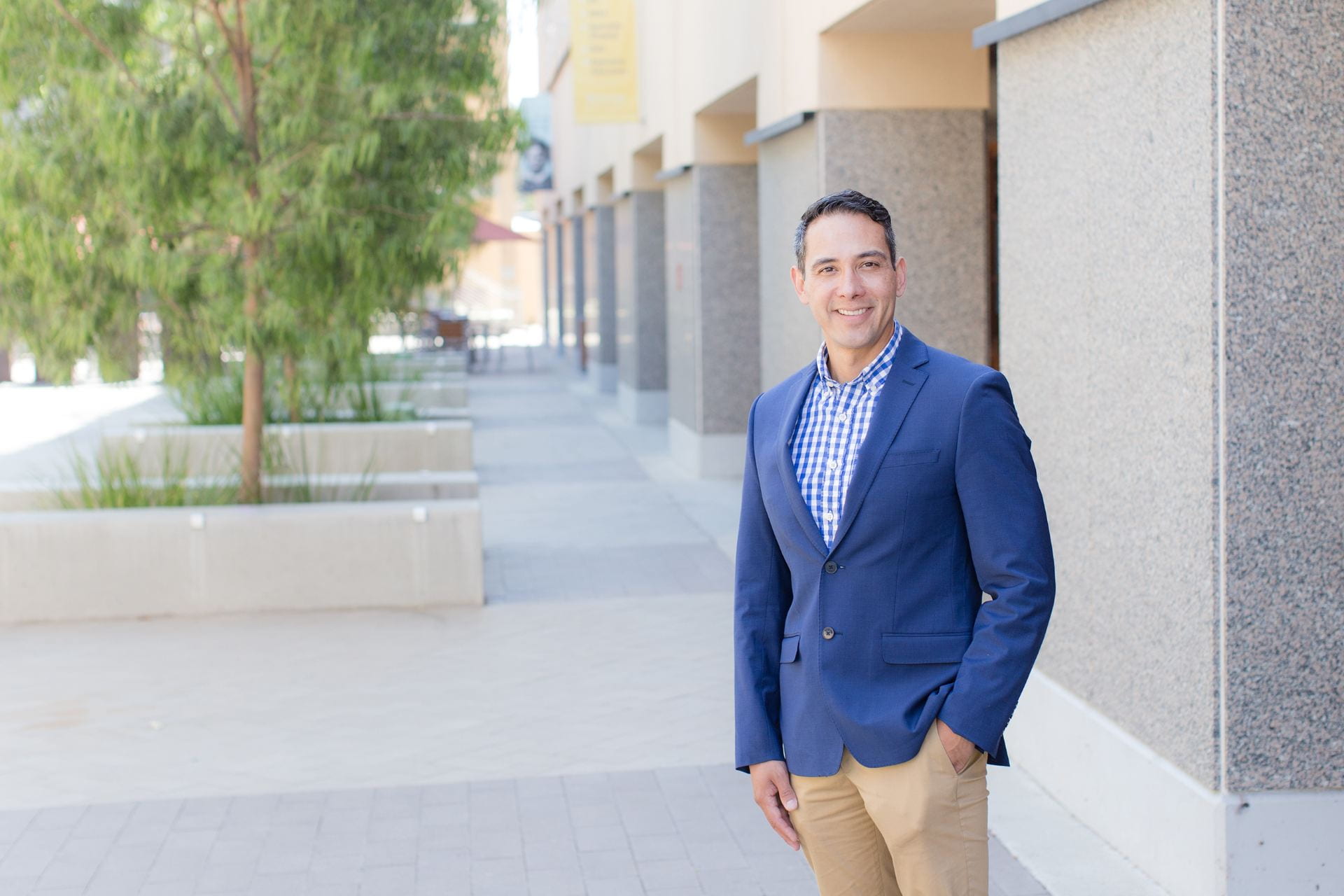UCI fall 2021 enrollment data shows student diversity trending upward
Number of underrepresented, first-gen and low-income undergrads continues to grow

Irvine, Calif., Dec. 7, 2021 — After a historic year of moving instruction to a remote environment, receiving a record number of applications and dropping SAT/ACT scores in admission decisions, the University of California, Irvine has released fall 2021 enrollment data showing an increasingly diverse student body.
“We’ve enrolled an exceptional class under extraordinary circumstances,” said Patricia Morales, Ph.D., associate vice chancellor for enrollment management.
UCI’s growing geographic influence is evidenced by the enrollment of 6,489 first-year students from more than 900 California high schools, 43 states and 46 countries. The fall 2021 numbers reveal that over 49 percent of California-resident freshmen at UCI are the first in their families to attend college and that more than 45 percent of them are from lower-income families. In addition, the university enrolled 2,860 new transfer students from 104 of the state’s 116 community colleges.
The UC admissions cycle begins with applications, which are due by Nov. 30 of the previous year. The campuses generally release their applications data after the new year. For fall 2021, UCI received the most applications in its history. Yield season, which starts in early spring after admission offers are sent to prospective students, lasts until May 1, the deadline for students to submit a statement of intent to register, or SIR, to their chosen campus. But it’s not until the third week of October that demographic data on the students who enrolled is finalized.
This information is submitted to the national Integrated Postsecondary Education Data System for analysis.
“The data collection categories used in IPEDS do not explicitly illustrate trends in students who self-identify in various ways, some of which may reference nationality and/or multiple categories of race/ethnicity,” Morales said. “For example, as we look deeper into the datasets, we can see that the number of Black/African American students at UCI has steadily grown and is at a record high because we can see students who self-identify as Black or African American as well as students who may identify as Black/African American and, say, Native American.”
The number of underrepresented-minority students among freshmen at UCI has increased over the past five years – with a more than 10 percent jump in fall 2021 over last year – and they account for nearly 37 percent of this year’s entering cohort. Data reflecting how first-year students self-identify their race/ethnicity indicates that UCI has enrolled the highest percentage of Black students (5.2 percent), Native American students (2.6 percent) and Hispanic students (31 percent, up from 22 percent in 2020) in at least the last five years.
“The diversity data demonstrate that our enrollment trends continue to reflect and advance the campus’s mission,” Morales said.
UCI’s total fall 2021 enrollment number is 36,505 (undergraduate and graduate). The university, which aims to be a national leader and global model of inclusive excellence, has been federally designated as both a Hispanic-serving institution and an Asian American and Native American Pacific Islander-serving institution. In August 2020, it launched the Black Thriving Initiative – a whole-campus approach to creating a culture in which Black people thrive, in part by linking UCI’s success with that of Black communities on and off campus. Earlier this year, the university was named an inaugural Fulbright HSI Leader by the U.S. Department of State’s Bureau of Educational and Cultural Affairs. And just last month, The Wall Street Journal/Times Higher Education College Rankings placed UCI at No. 3 in the country for diversity.
“UCI aspires to be the nation’s foremost destination for our diverse students to thrive,” said Douglas M. Haynes, Ph.D., vice chancellor for equity, diversity & inclusion. “This fall’s enrollment outcomes demonstrate that the momentum is undeniable. The UCI Black Thriving Initiative builds on our federal designation as a Hispanic-serving institution and an Asian American and Native American Pacific Islander-serving institution. As a campus, we are relentless in building a culture of inclusive excellence for all.”
According to the fall 2021 data, UCI also has enrolled the most first-year U.S. students from out of state in campus history. That population constitutes roughly half of freshmen not from California.
“There can often be a perception that all of our nonresidents are international students, and while in the past international students have certainly made up the lion’s share, that trend is shifting now toward more balance between domestic and international,” Morales said. “I think it’s also worth mentioning that the campus strategic plan includes extending the reputation and recognition of UCI nationwide. With UCI’s brand recognition and high rankings, more and more qualified domestic nonresident students are applying.”
More information about how UCI’s enrollment management division helps support the university’s strategic mission can be found on this episode of the UCI Podcast featuring Morales.
In indicators of short- and long-term affordability, UCI continually excels. Some 11,500 of its students received Pell Grants in 2020-21 – many of them first-generation students, for whom a university education is a means to upward social mobility. Information on UCI’s commitment to helping individuals achieve the American dream can be found on this website.
Overall, UCI has been acknowledged as one of the best public universities in the country. A member of the prestigious Association of American Universities, it has been ranked among the nation’s top 10 public universities by U.S. News & World Report for the past seven years in a row. And UCI has been in the top 10 in Sierra magazine’s “Cool Schools” listing of sustainability leaders for an unmatched 12 straight years, with four first-place finishes.
About the University of California, Irvine: Founded in 1965, UCI is the youngest member of the prestigious Association of American Universities and is ranked among the nation’s top 10 public universities by U.S. News & World Report. The campus has produced three Nobel laureates and is known for its academic achievement, premier research, innovation and anteater mascot. Led by Chancellor Howard Gillman, UCI has more than 36,000 students and offers 224 degree programs. It’s located in one of the world’s safest and most economically vibrant communities and is Orange County’s largest employer, contributing $7 billion annually to the local economy and $8 billion statewide. For more on UCI, visit www.uci.edu.
Media access: Radio programs/stations may, for a fee, use an on-campus ISDN line to interview UCI faculty and experts, subject to availability and university approval. For more UCI news, visit news.uci.edu. Additional resources for journalists may be found at communications.uci.edu/for-journalists.
About UCI’s Brilliant Future campaign: Publicly launched on Oct. 4, 2019, the Brilliant Future campaign aims to raise awareness and support for UCI. By engaging 75,000 alumni and garnering $2 billion in philanthropic investment, UCI seeks to reach new heights of excellence in student success, health and wellness, research and more. Learn more by visiting https://brilliantfuture.uci.edu/areas-to-support.


